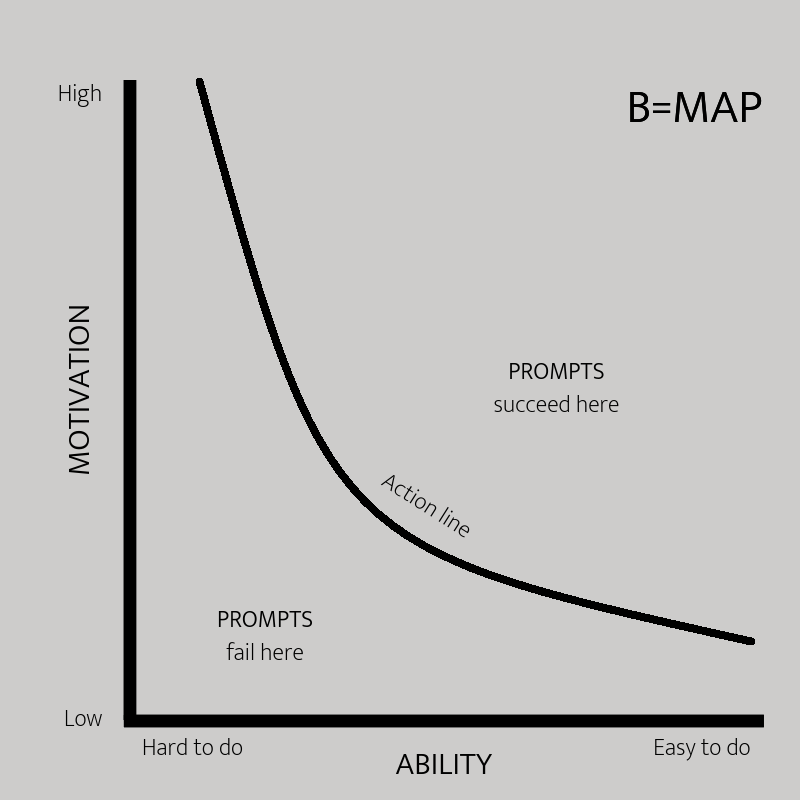On Waffle Wednesday 11.9.2019 Riitta Mettomäki came to tell us about Behavior Design. She is a Behavior Design expert and works as an independent entrepreneur in Frankly Behavior Design. She has over ten years of experience in user-centered design and development. She consults public, private and third sector companies.
What is Behavior Design?
Behavior Design is a growing and strong field of design and is said to be one of the future forms of service design. It helps to understand people’s behavior, to determine what action you want to accomplish by behavior, and systematically plan how to get it done. It combines design with behavioral science, design tools and ethics. All elements should be taken into consideration in order to achieve the planned action, make the product or service successful among users, and achieve business goals. Behavior Design can be used in many different fields and across a variety of products and services. Products or services may need to be redesigned or may be ideas in the concept phase.
Action is always the goal
Quite often there is an action intention gap between an action and its implementation. A person may want something and even know how to achieve that goal, but still does not behave in a way that would achieve that goal. It is all about getting people to act a certain way, because the success of a business often requires a certain amount of action from the user. Behavior is difficult to plan or predict. However, it is often possible to take advantage of the knowledge that people are lazy. Our brains are looking for the easiest way to reach a goal. Behavior Design is needed to find the right action for which the user is to be directed. Thereafter, Behavior Design methods are used to systematically create the conditions in which the desired behavior occurs and eventually stabilizes.
Fogg Behavior Model
B.J. Fogg is a behavioral scientist and has designed Fogg Behavior Model, B=MAP. The model helps to understand the behavior in general and to predict whether the desired behavior will occur. According to the behavior model, three elements: motivation, ability and prompt, must exist at the same time for the desired action to take place.

Motivation is measured on the vertical axis and can be either low or high. Ability is measured on the horizontal axis. The ability can be either hard to do or easy to do. An action line is drawn between the axes to predict whether the prompt will fail or succeed. On the left side of the line, the desired behavior does not occur and on the right side of the line the desired behavior occurs. The model not only analyzes which side of the action line users are on, but also helps to determine whether the ability or motivation should be increased to achieve the desired behavior.
How to achieve the desired behavior?
Prompt
Make sure that users:
- see a prompt
- understand it
Ability
It is more likely that the desired behavior will occur if it is easier to achieve. The question is how to make achieving the goal easier for the user. Here you can use the 6 elements of simplicity created by Fogg, which are:
- Time
- Money
- Brain cycles
- Physical effort
- Social deviance
- Non-routine
Generally, the resource that is the weakest determines whether a person behaves as he or she is expected to behave. This is why user research and customer knowledge are very important. You need to know your customer in order to know his or her ability as accurately as possible, so that you can focus on the resourse that is the weakest.
Motivation
From the B=MAP model, it is recommendable to focus the least on motivation because it varies a lot. Because of the nature of motivation, you should not rely entirely on it or build a service or product based on it. However, it has a role to play in achieving behavior. In a situation where no more ability factors can be influenced, an attempt can be made to increase motivation. For example, the benefits of the product or service to the user can be described.
Ethics
Ethics is a really important part of behavioral design. Often there are no clear answers to ethical questions, but this aspect still needs to be considered every time in Behavioral Design. For example, you might ask:
- Do users know that you are trying to influence their behavior?
- Do you make it easier to do good or bad?
- When should behavior be made more difficult?
Your Action Plan Shortly:
- Pick a behavior.
- Make sure the prompt is in place.
- Apply the 6 simplicity factors. Which resource is the weakest?
- How can you increace that resource?
Frankly Behavior Design: https://www.frankly.fi/
https://www.facebook.com/parempiatapoja/ (in Finnish)
https://fi.linkedin.com/in/riittamettomaki
#behaviordesign


